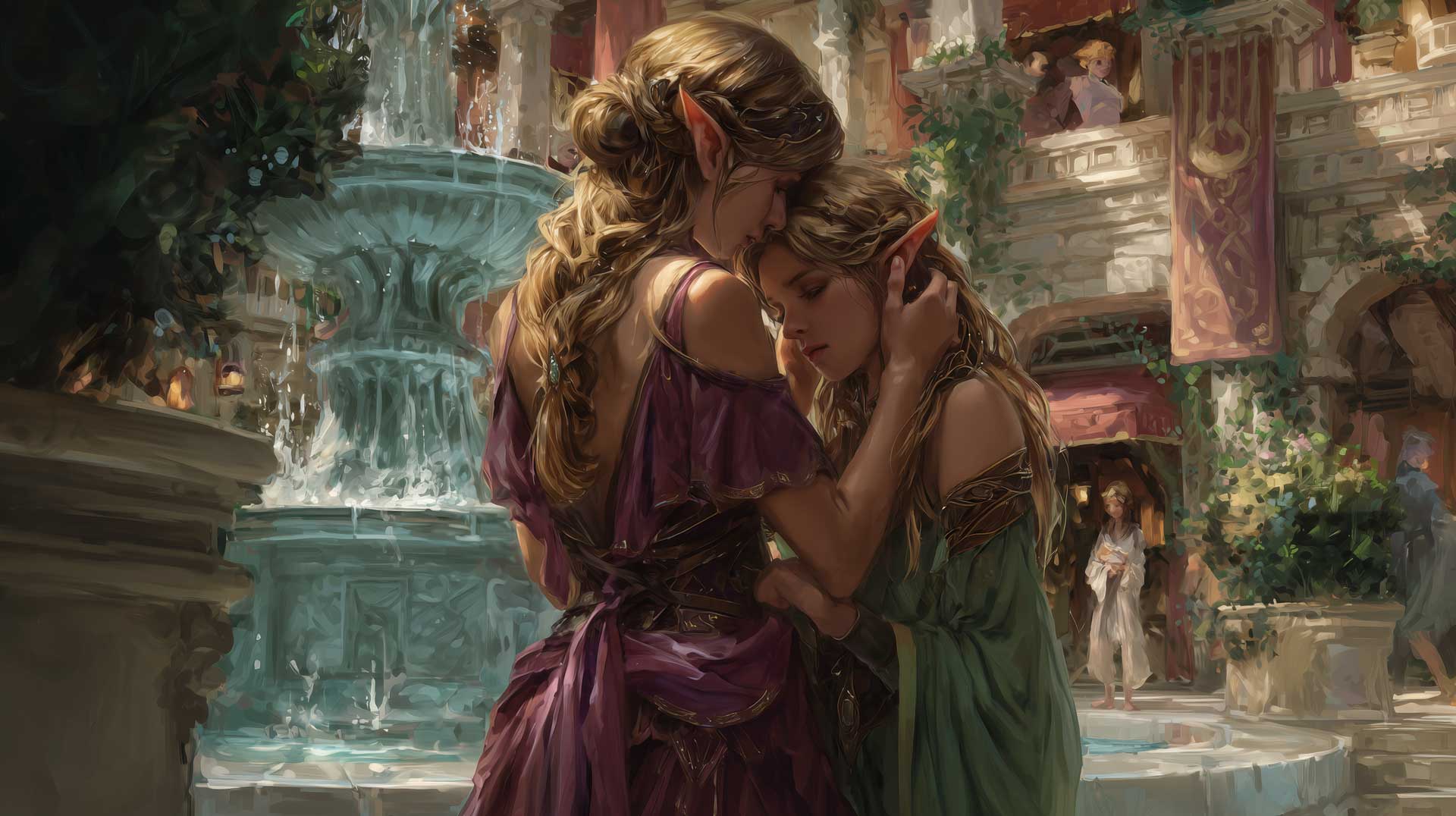Krates Priest
To know a name is to hold a thread of the soul.
The Krates Priests (or Priestess) are a reclusive and revered order of spiritual healers who walk the narrow path between faith and mind. Neither fully physicians nor fully clergy, these enigmatic figures have long been whispered about in the quiet corners of shrines, healing houses, and village squares across the lands of Nyria. Recognizable by their long, tightly bound hair and the deep purple sashes they wear over simple robes, the Krates Priests are both healers of the spirit and guardians of a forgotten art.
Origin and Calling
The name “Krates” comes from an archaic root meaning “to contain” or “to hold fast.” Fitting, as the central tenet of their practice is to hold space for another’s pain until it can be released, reshaped, or gently carried.
Each Krates Priest begins as a patient. It is a foundational part of their path: only those who have walked through the shadows of their own suffering may walk beside others. Once healed, the most perceptive and emotionally attuned among the recovered are invited to apprentice under elder Krates. Their training takes years, blending ancient philosophies with an early form of psychological observation, talk therapy, and pharmacological balance.
They are rare—exceptionally so. There are never many, and never enough.
Practices and Traditions
Krates Priests do not serve in temples or hold sermons. They travel from town to town, often following whispers of affliction or requests sent by local healers. When they arrive, they speak little. They observe. They listen.
In their work, they use a blend of rituals and observation—sometimes guiding the afflicted through dreams, symbolism, or gentle confrontation. They may prescribe or prepare tinctures from known herbs, but their greatest tool is the act of listening with full presence.
One of the most famous and uncanny traits of the Krates Priests is their perfect recall of names. It is said that once a Krates has asked you your name, they will never forget it. Even decades later, even if you’ve changed your life entirely, a Krates will greet you by name and remember the pain you once shared.
Their purple sash is not merely decoration but a sign of the sacred burden they carry—woven with threads from each place they’ve served, knotted in quiet remembrance of those they’ve healed.
The Mythos and the Divine Thread
Legends tell of Krates Priests as keepers of secret divine knowledge—that they are taught to identify those touched by the divine, the unseen anointed, through the patterns of their dreams, their fears, and their scars. Whether this is true or a romantic myth woven around their mystery, none can say. The Krates themselves do not confirm, nor deny.
Throughout history, they have been courted by kings and scholars alike—invited to sit on councils, to advise, to teach. They always refuse. The Krates do not align politically and never remain in one place for long. Their neutrality and incorruptibility are part of why their presence is so trusted—and so mysterious.
Community and Survival
They live only by donation and gratitude. Villages often come together to feed and house a Krates while they stay, and even long after they’ve left, offerings are placed at shrines in their honor. A single visit from a Krates can lift a generation from a shroud of unspoken pain.
No central registry exists, no map of where they go. And yet, when truly needed, one always seems to appear.








They sound amazing